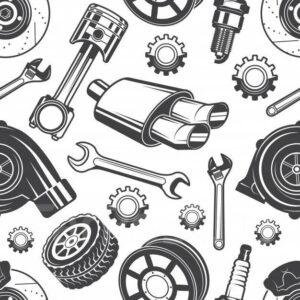Power Transformer Manufacturers
If you’re in the power industry or even remotely connected to large-scale electrical infrastructure, you already know one thing—change is the only constant. Over the past decade, we’ve seen how rapidly energy ecosystems are evolving. Smart cities are coming up, electric vehicles are going mainstream, and renewable power is no longer a niche—it’s necessary.
With this transition comes a big question: Is your power infrastructure ready for the future? And at the core of that infrastructure lies one understated yet crucial component: the transformer. Let’s talk about how future-ready transformer manufacturers are stepping up—and what to look for if you’re planning to upgrade, replace, or invest in power distribution systems.
Why Transformers Need to Be “Future-Ready”
Transformers have traditionally been viewed as static workhorses—installed, forgotten, and only noticed when something goes wrong. But with the growing demands of digitization, renewable integration, and energy efficiency, today’s transformers need to do more than just “transform.” The grid is changing fast. Here’s what’s new:
More homes and plants are adding solar power
EVs are growing by the day
Smart tech is in our homes and on the roads
Energy rules are stricter now
Power loss is no longer okay
Old systems can’t keep up with these changes. So, a transformer must now do more than just step voltage up or down. It must:
Work seamlessly with renewable energy sources
Support remote monitoring and diagnostics
Deliver high energy efficiency
Comply with the latest regulatory and safety standards
Think ahead with smart tech
Save energy and lower bills
Work with solar, wind, and EVs
Easily integrate with other systems
A future-ready transformer company provides tailored solutions across multiple industrial sectors, which include healthcare with manufacturing. The devices now extend beyond their traditional role of voltage transformation. Modern power transformers are smart. They focus on three key aspects, which include reliability alongside adaptability and intelligence.
What Is a “Smart” Transformer?
A smart transformer does more than pass power from one place to the next. It has tools inside it—sensors, meters, and control tech—that help it:
Track how much load it takes
Spot heat or faults early
Send data to your phone or PC
Help plan fix-ups before things break
It’s like a health app for your power system.
These smart tools help cut waste, save time, and stop faults before they cost you big. New-age transformers are built with the earth in mind. How
They use eco-friendly oils that don’t harm land or water
They are built with low-loss steel, so they don’t waste power
Some use dry-type tech—no oil, no leak risk
Their parts can be re-used or recycled
So, they’re clean, safe, and fit for places with green rules—schools, malls, homes, or solar sites.
Built for Real-World Needs
Pad-type transformers for fast setups
Solar-ready models that sync with your panels
Ring main units (RMUs) for safe city use
Low noise types for offices or homes
These aren’t off-the-shelf tools. They’re made to fit your load, space, and plan.
Benefits of Future-ready Transformers
Power loss dropped by 20%
No shut-downs in peak months
The power team can see issues before they became big
Whether through SCADA integration, GSM/GPRS monitoring, or advanced BMS-compatible devices, today’s transformers support digital communication. It makes asset management easier and helps in long-term planning—especially for infrastructure clients with multiple sites.
So… What Should You Look For?
You now know what a good, smart transformer should do. But how do you spot a future-ready transformer company that builds the right kind?
Robust After-Sales Support: Let’s be honest—electrical equipment needs servicing. A company that offers fast-response support, warranty-backed service, and on-site troubleshooting is worth its weight in copper.
Here’s a list to help:
Long Track Record: They should have years of work in real sites—power firms, malls, solar farms, and more.
In-House Testing: The company should test their transformers before it leaves the site. Shock tests, heat checks, fault load trials—you want it all.
Custom Builds: They should offer builds made for your case—not just fixed specs.
After-Sales Help: Even smart machines need care. Go with firms that offer quick fix-ups, clear AMCs, and real-time help.
Smart Tools: If the unit can’t talk to your phone or send alerts to your system, it’s not ready for what’s next.
Final Word: Don’t Settle for “Old School”
Power needs have changed. The grid is smarter, the stakes are higher, and waste is no longer okay. So, if you’re still using a basic transformer, you’re missing out. More power doesn’t have to mean more risk or higher bills. With the right machine, you get more uptime, less waste, and peace of mind.
The right future-ready transformer company won’t just sell you a box. They’ll give you a full power fix that’s clean, smart, and ready for the next decade. Whether you’re an electrical consultant, facility manager, EPC contractor, or just someone planning a new plant or building, ask yourself:
Are the transformers I’m relying on ready for the next 10-15 years?
If the answer isn’t a confident “yes,” it might be time to explore new-age transformer companies that are engineering for the future, not just the present.
Website: https://www.servokon.com/blog/top-10-power-transformer-manufacturers-and-suppliers-in-india/













